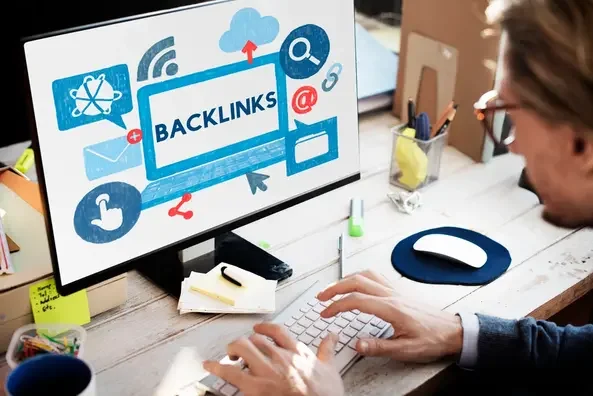How to Fully Optimize Your Google Business Profile for Local SEO Success
An optimized Google Business Profile (GBP) is essential for improving visibility in local search results. Whether users are looking for a nearby service or comparing businesses in their area, your profile often provides the first impression. Taking the time to fully optimize your GBP increases your chances of showing up in the local pack, map searches, and voice queries.
Start by claiming and verifying your business. This step ensures you have full control over the information displayed. Verification can be completed by postcard, phone, or email depending on your business type. Once verified, you can begin adding the details that influence search performance and customer decisions.
Accurate business information is the foundation of optimization. Your business name, address, and phone number (NAP) must be correct and consistent with what appears on your website and across all online directories. Even small inconsistencies can confuse search engines and reduce trust in your listing.
Choosing the right categories is another critical step. Your primary category should reflect your core service, such as “Insurance Agency” or “Family Dentist.” Secondary categories allow you to showcase additional services and help your profile appear in a broader range of searches. Avoid overloading categories that do not truly represent your offerings.
Write a compelling business description using natural language and keywords that reflect what local customers search for. This is your opportunity to communicate what sets you apart, highlight specializations, and include phrases that align with your local SEO strategy. Keep it concise and informative while avoiding promotional hype.
Regularly updating your business hours, including special holiday hours, is essential for both user experience and ranking signals. Google prioritizes businesses that provide accurate and up-to-date information. If your hours are incorrect, users may quickly move on to a competitor with clearer availability.
Photos play a powerful role in customer engagement. Upload high-quality images of your storefront, team, services, and interior. Businesses with updated photos tend to receive more clicks and direction requests. Geotagging images can also enhance local relevance, especially when paired with location-specific file names and alt text.
Collecting and responding to reviews improves both visibility and trust. Encourage satisfied customers to leave reviews and take time to respond to each one. Thoughtful replies to both positive and negative feedback show engagement and signal to Google that your business is active and customer-focused.
Utilize Google Posts to share updates, promotions, events, or educational content directly on your profile. These posts give users a reason to engage and can support seasonal campaigns or new product launches. Consistently publishing new content through this feature increases interaction and relevance.
Enable all relevant attributes and service areas. Attributes such as “wheelchair accessible” or “online appointments available” help users filter results based on their needs. If you serve multiple locations, clearly define your service area to increase your chances of appearing in nearby searches.
Tracking performance through Google’s built-in insights allows you to monitor search queries, profile views, direction requests, and website clicks. Use this data to refine your strategy and identify opportunities for further optimization.
Top Backlink Building Strategies That Actually Work in 2025
Backlinks remain one of the strongest signals search engines use to determine authority and trust. While many tactics from the early days of SEO are now outdated, the right backlink strategy in 2025 still delivers powerful results. The key is earning links through quality, relevance, and genuine value rather than shortcuts.
One of the most reliable strategies is producing link-worthy content. This includes in-depth guides, original research, expert roundups, and data-driven resources that naturally attract attention. When content offers unique insights or solves a specific problem better than existing options, other sites are more likely to reference and link to it.
Digital PR has become a cornerstone of modern link building. By pitching story angles or expert commentary to relevant journalists and bloggers, brands can secure high-authority backlinks from news outlets and industry publications. Services like HARO and Help a B2B Writers connect businesses with journalists actively seeking sources, making it easier to earn coverage that also boosts search rankings.
Guest posting still works when done strategically. Writing for respected industry websites allows you to share valuable insights while securing contextual backlinks to your own content. The focus should be on quality over quantity. A single guest post on a high-domain authority site in your niche can provide far more impact than multiple posts on low-value blogs.
Creating resource pages or tools is another high-performing tactic. If your brand offers a free calculator, template, checklist, or educational guide, other websites are likely to link to it as a useful reference. These evergreen assets attract links over time, especially when promoted through targeted outreach to websites that already cover related topics.
Broken link building remains a smart way to gain relevant backlinks. This process involves finding dead links on reputable websites and offering your content as a replacement. Tools like Ahrefs and Check My Links can help identify these opportunities. The key is providing a relevant resource that fits seamlessly with the original content.
Sponsorship and partnerships can also lead to natural backlinks. Many nonprofits, event organizers, podcasts, and local organizations list sponsors on their websites. Supporting a cause or collaborating with a complementary business can result in brand mentions and link placements from highly trusted domains.
Leveraging unlinked brand mentions is another effective tactic. Tools can track when your brand is mentioned online without a link. A simple outreach email requesting a hyperlink can turn those mentions into valuable backlinks with minimal friction.
Skyscraper content strategies continue to show results. This involves identifying popular content with lots of backlinks, creating a more comprehensive or updated version, and reaching out to the sites linking to the original. The goal is to offer an improved resource that others will want to reference instead.
Social sharing and influencer engagement help amplify your content, increasing the chances of natural backlinks. While social signals themselves may not directly impact SEO, they help expose your content to wider audiences, including bloggers and journalists who may link to it in future content.

